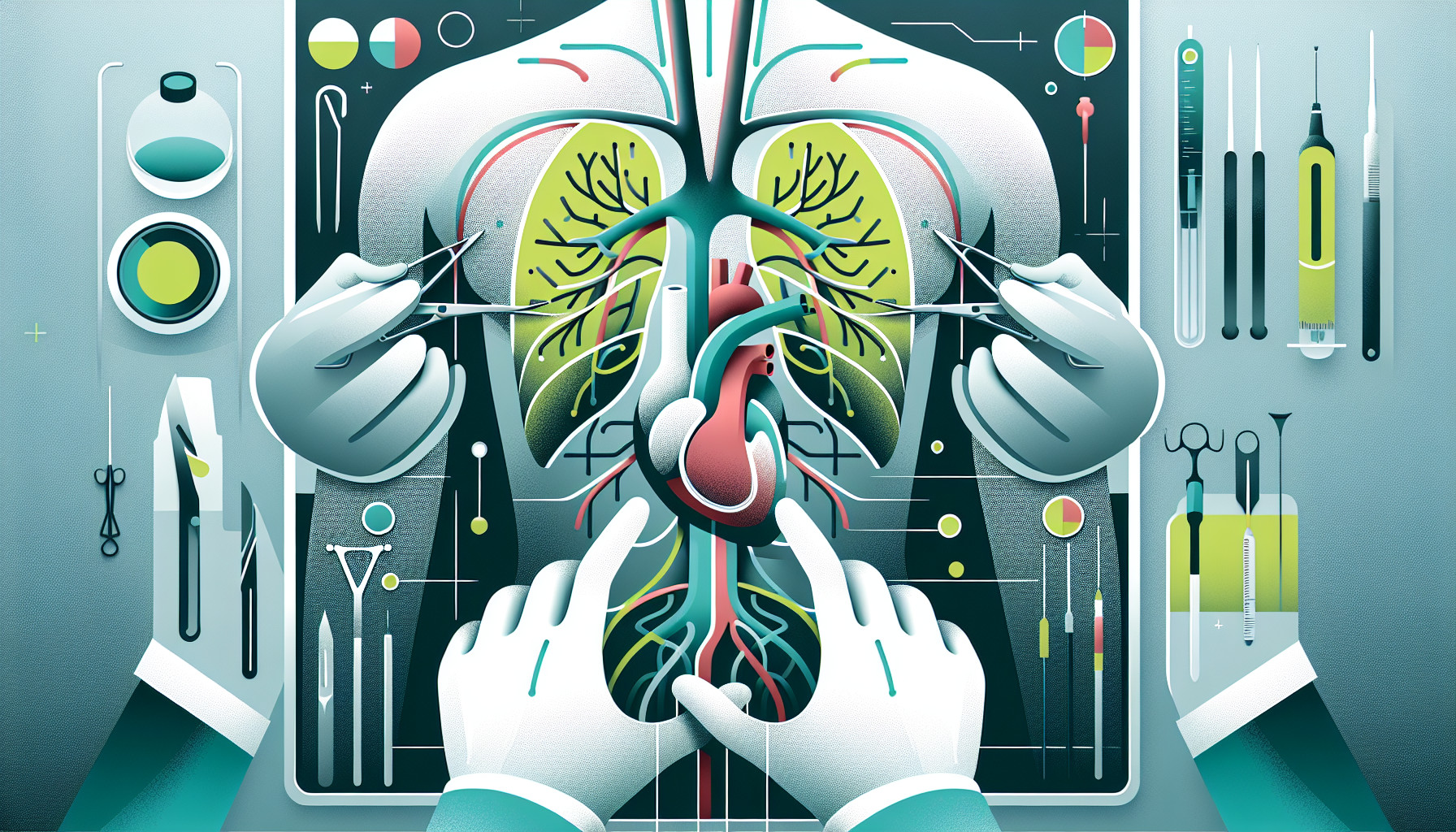Our Summary
This research paper is about abdominal aortic aneurysms, which are abnormal enlargements of the aorta (the main blood vessel in the body) in the abdomen area. These are found in about 6% of men and 1.7% of women over 65 years old, and often don’t show any symptoms. Without treatment, these aneurysms can keep growing until they burst, which is fatal 80% of the time. Even when emergency treatment is done after a burst, half of these patients don’t survive their hospital stay.
To reduce deaths from this condition, it’s best to fix the aneurysm before it bursts, while it’s still symptom-free. This is why some places have screening programs to find and treat these aneurysms early. About 60% of these aneurysms are found in a specific part of the aorta that can be fixed with readily available endovascular devices. These devices are placed inside the blood vessel to reinforce the walls and prevent a rupture. This endovascular technique has now become the preferred method for fixing aneurysms, taking over from open surgery.
FAQs
- What is an abdominal aortic aneurysm and how common is it in men and women over the age of 65?
- What is the primary method for repairing abdominal aortic aneurysms?
- How can mortality from aortic aneurysms be reduced?
Doctor’s Tip
One important tip a doctor might tell a patient about aortic aneurysm repair is to follow up regularly with their healthcare provider to monitor the size of the aneurysm and determine if intervention is needed. It is crucial to address any risk factors such as smoking, high blood pressure, and high cholesterol to prevent further complications. Additionally, patients should maintain a healthy lifestyle with regular exercise and a balanced diet to support overall cardiovascular health.
Suitable For
Patients who are typically recommended for aortic aneurysm repair include:
- Patients with asymptomatic abdominal aortic aneurysms that are at risk for rupture based on size and growth rate.
- Patients with symptomatic abdominal aortic aneurysms, such as those experiencing abdominal or back pain.
- Patients with a family history of abdominal aortic aneurysms.
- Patients with risk factors for aortic aneurysms, such as smoking, high blood pressure, and atherosclerosis.
- Patients with a history of aortic dissection or other aortic diseases.
- Patients with certain genetic conditions that increase the risk of aortic aneurysms, such as Marfan syndrome or Ehlers-Danlos syndrome.
Overall, the goal of aortic aneurysm repair is to prevent rupture and potentially life-threatening complications, such as internal bleeding. The decision to undergo repair is based on a thorough evaluation of the patient’s overall health, the size and location of the aneurysm, and the potential risks and benefits of the procedure.
Timeline
Before aortic aneurysm repair:
- Patient may be asymptomatic or experience vague abdominal or back pain
- Aneurysm may be incidentally found on imaging done for other reasons
- Patient may undergo diagnostic tests such as ultrasound, CT scan, or MRI to confirm the presence and size of the aneurysm
- Patient may be monitored regularly to track the growth of the aneurysm and determine the need for intervention
After aortic aneurysm repair:
- Patient undergoes pre-operative evaluation and preparation for surgery, which may include blood tests, imaging studies, and consultations with various specialists
- Depending on the type of surgery (open repair or endovascular repair), patient may have a hospital stay ranging from a few days to a week or more
- Patient may experience pain, discomfort, and fatigue post-operatively, which can be managed with pain medications and rest
- Patient may need to follow up regularly with their healthcare provider for monitoring and maintenance of the repaired aneurysm
- Patient is advised to make lifestyle changes such as quitting smoking, maintaining a healthy diet, and regular exercise to reduce the risk of future aneurysm formation or recurrence.
What to Ask Your Doctor
- What are the risks and benefits of undergoing aortic aneurysm repair surgery?
- What type of repair procedure is recommended for my specific case (open surgery or endovascular repair)?
- What is the success rate of the chosen repair procedure?
- What is the recovery process like after the surgery?
- What are the potential complications or side effects of the surgery?
- How frequently will I need follow-up appointments or monitoring after the surgery?
- Are there any lifestyle changes or medications I should consider post-surgery to prevent further complications?
- What is the long-term outlook for my condition after the surgery?
Reference
Authors: De Freitas S, D’Ambrosio N, Fatima J. Journal: Surg Clin North Am. 2023 Aug;103(4):595-614. doi: 10.1016/j.suc.2023.05.001. Epub 2023 Jun 9. PMID: 37455027
